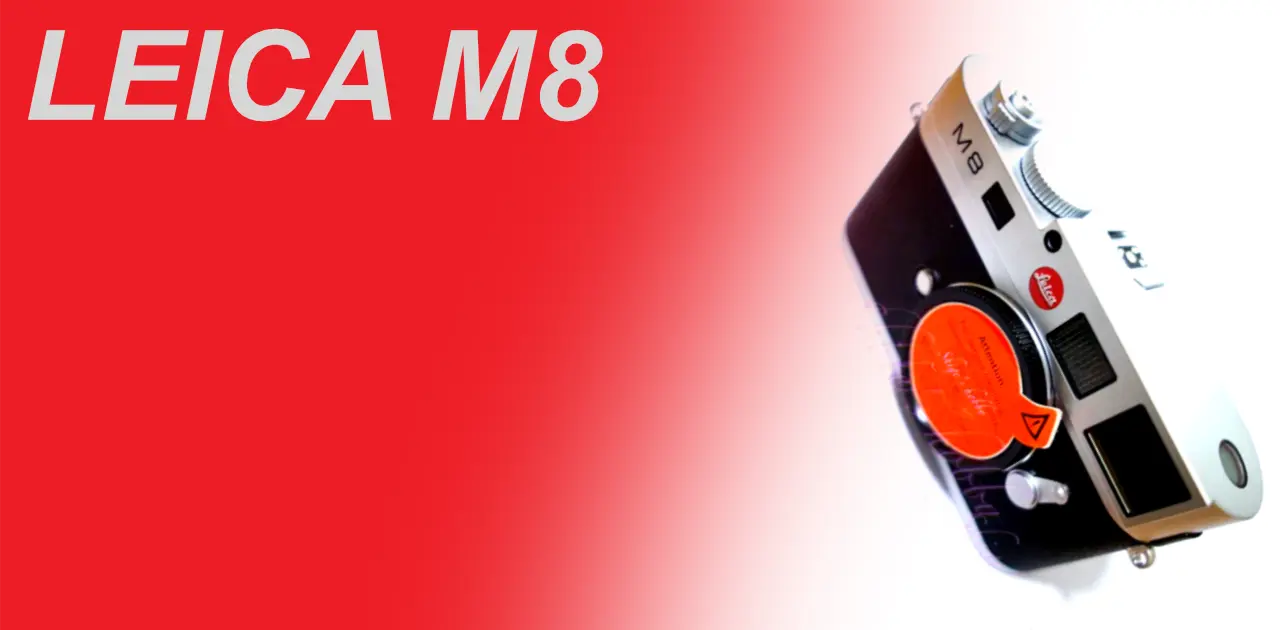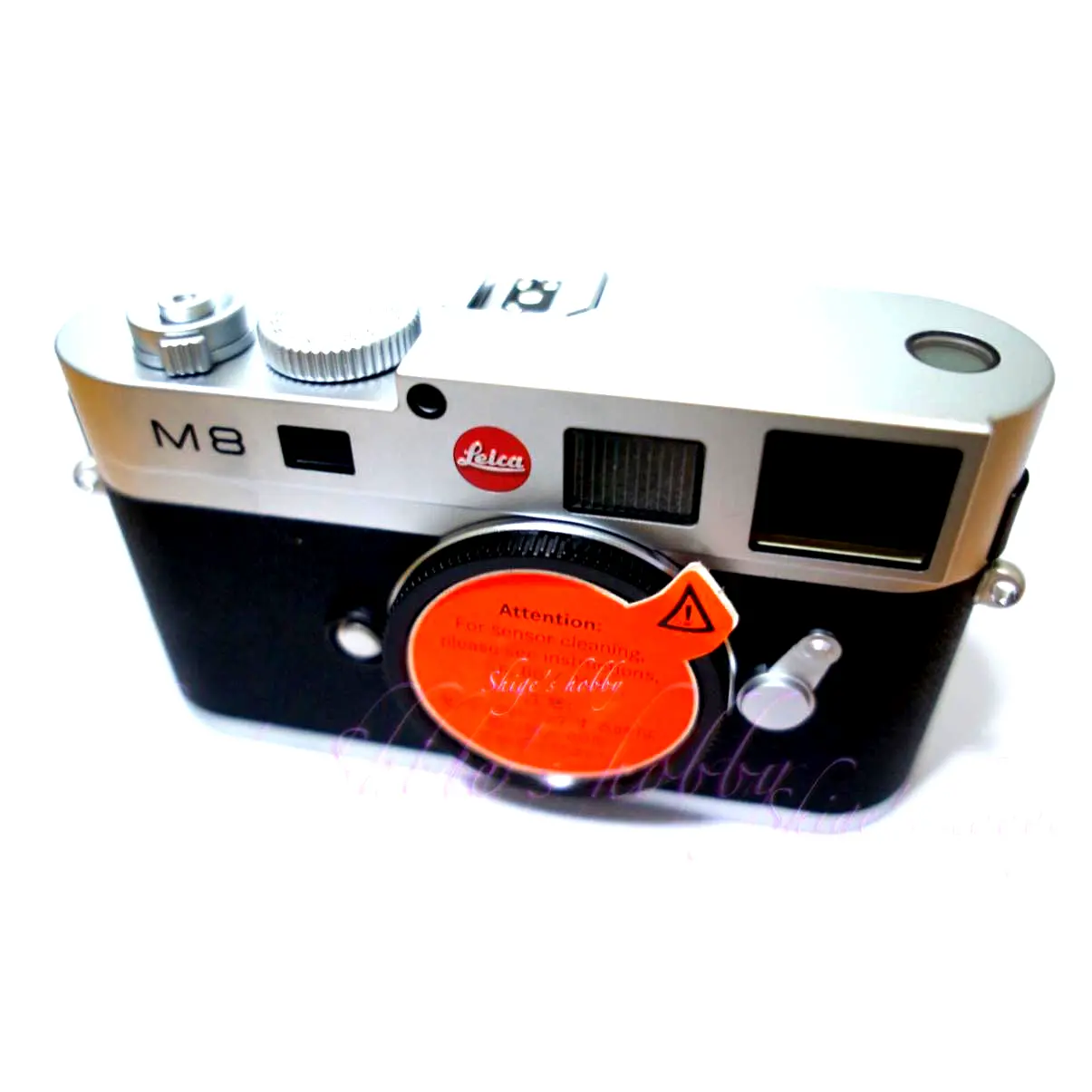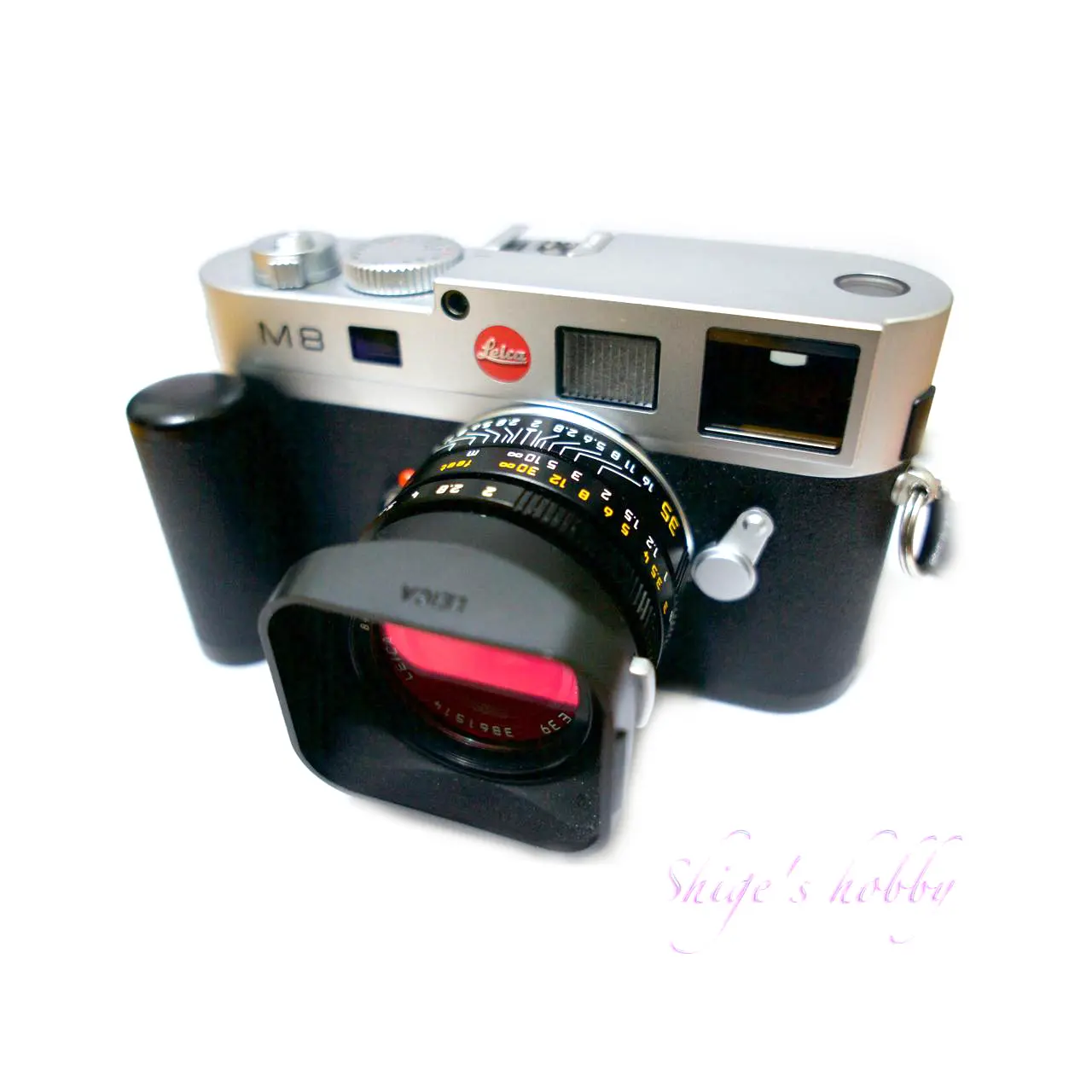LEICA 1st Digital RF LEICA M8

A review and Photo Examples of the LEICA M8 Rangefinder Digital Camera.
Table of contents
Gallery
The following lenses were used to take the example photos:
Review


1.Overview
The Leica M8 was the first Leica M-type digital camera, equipped with the Kodak APS-H size 10.3 megapixel CCD sensor KAF10500. The camera size is a little thicker than the film M-type Leica, but it still fully embodies the shape of the M-type Leica.
Because of the APS-H sensor size, lenses with a 24mm to 135mm viewfinder frame are fine, but for lenses wider than 21mm, it was necessary to find a viewfinder with a focal length x 1.3, which made framing difficult.
For example, when using the COSINA Ultra Wide Heliar 15mm, 15*1.33=19.95mm, so a 21mm viewfinder was used.
This sensor size is slightly smaller than 35mm full frame, so the disadvantage is that the lens cannot be used at its original angle of view, but the advantage is that the Leica M9 and later models, such as the Super-Angulon and CONTAX G BIOGON, have a color cast on the periphery that is a problem with wide-angle lenses with protruding rear lenses, and you can take decent photos by forcibly cutting out the color cast.
The disadvantage of the Leica M8 is that the IR cut of the sensor is weak, so if you do not prepare a UV/IR filter, magenta cast may occur, which is troublesome to deal with. To compensate for this, Leica distributed two UV/IR filters of any size. Since it was not realistic to purchase all the UV/IR filters, I purchased many step-up and step-down rings to manage lenses with various filter diameters with the UV/IR filters I had. I sometimes took pictures without attaching them because it became troublesome halfway through.
At the same time as the release of the Leica M8, a 6-bit code was added to the M lens mount surface, and a function was added to recognize the focal length of the lens from the camera when using a 6-bit coded lens.
Since the Leica M8/M8.2 can only identify lenses by a 6-bit code input from the mount surface, I added the 6-bit code to the lens and L/M mount adapter while looking at a 6-bit code table.
The 6-bit code is also recognized by the viewfinder frame (the position of the M mount tabs), so adding a 28mm 6-bit code to a 35/135 mount adapter will not be recognized.
2.Usability
The Leica M8 is my first Leica body, and I bought it as a step-up from the EPSON R-D1.
The normal ISO sensitivity is 160, the next 320 is a little noisy, and 640 is quite noisy. 1250 was rough, but it was usable in some situations.
A mode is practical for shooting, and when you want to adjust the shutter speed, instead of the Japanese style of adding or subtracting the exposure, you change the shutter speed directly with the shutter dial and shoot, which I think is a reasonable operation method that has not changed since the film era.
The rear LCD is for settings and does not have a live view, and even if you enlarge the shot, you cannot see the focus, so I always used it with preview off. That way you can experience the tension of using a film camera.
The shutter sound of the Leica M8 is loud and metallic compared to the digital M cameras of the 2020s, because it is equipped with a high-speed mechanical shutter with a maximum speed of 1/8000. Therefore, the shutter sound is loud enough to make a timid cat run away.
The recording media is the first generation SD card, and rare 4GB SD cards can also be used, but it will be difficult to find a 4GB SD card that is not an SDHC card on the market. If you use a 2GB SD card, which is relatively easy to obtain, you can shoot about 200 images in Raw (DNG) format, so there is no problem in general use.
The M8 also supports SDHC cards with a maximum capacity of 32GB from firmware 2.0.
The battery uses the Leica 14464, which has been used up to the Leica M9. This battery has a unique shape and compatible batteries were seen for a while, but the supply was temporarily cut off, but as of 2024, compatible products can be found on Amazon, Aliexpress, etc. When the battery was released, there was an issue where the camera did not correctly recognize the battery status, but it is unclear whether recent compatible batteries have been improved.
It is an expensive camera, so it is not recommended to take the risk of a compatible battery. When purchasing a used camera, the battery status is important, but since there is no way to tell the battery status from the appearance, it is a troublesome issue.
The M8 comes with a large battery charger, but the model number 14470 included with the M8.2 and later is more compact and easier to carry around.
3.Summary
To sum up the LEICA M8, with 10 megapixels there is no problem with normal photography, and it is a decent product for Leica’s first digital rangefinder camera.
When purchasing, there are three points to consider, and it is a good camera for photographers who don’t mind these.
- The sensor size is APS-H and the focal length is 1.33 times longer.
- If you do not attach a UV/IR filter, false colors and moiré will occur depending on the subject.
- The shutter sound can be unpleasant.
Specification and Model History
The viewfinder, which is the lifeblood of a rangefinder camera, is a 1x finder on the EPSON R-D1, while the M8 has a small finder magnification of 0.68x. However, the effective baseline length is 38.2mm on the R-D1, while the M8 has 47.09mm, making the rangefinder more accurate. Leica finders also have a long history and are well-made, making them easy to see.
The output image has a higher resolution than the 10MP APS-H sensor on the R-D1’s 6MP APS-C sensor, but when reducing the image for the web or printing in L size, the difference in image quality between the APS-C and APS-H sensor sizes is not noticeable.
The biggest problem with the M8 is the UV/IR filter issue, as mentioned above.
This is not an issue with the R-D1, and the M8 can suffer from strange moiré when shooting depending on the subject.
Lenses are recognized by a 6-bit code, but since the Leica M9, the focal length can be set by the lens name from the menu, so this 6-bit code is rarely used anymore. There was a time when the used price differed depending on whether the lens had a 6-bit code or not when selling and buying used lenses, but as of 2024, the condition of the lens takes priority and there is no difference in price if the condition is the same.
The Leica M8 was released at an affordable price of 575,000 yen for a new lens. As of 2022, the price of the M8 had stopped falling at around 200,000 yen, but as of 2023, it has returned to around 300,000 yen. It can only be said that it is expensive for a digital camera with no warranty, but it is a mystery that the price does not drop even in this condition. In addition, other M-type digital bodies are generally stable at high prices, except for the M typ240, which is produced in large quantities.
| Items | M8 | R-D1x | M9 |
| Effective pixels(Megapixels) | 10.3-Megapixels | 6.1-Megapixcels | 18.0-Megapixels |
| Sensor manufacturer and model number | Kodak KAF10500 | Unknown | KAF-18500 |
| Sensor size | APS-H Size 27 x 18mm | APS-C 23.7 x 15.6mm | 35mm Full frame 35.8 × 23.9 mm |
| Rear LCD | 2.5 inch 23 million dot | 2.5 inch 23 million dot | 2.5 通常ガラス |
| View finder | 0.68 | 1 | 0.68 |
| Mechanical Shutter speed | 1/8000 | 1/2000 | 1/4000 |
| Battery | Leica 14464 | EPALB1 | Leica 14464 |
| Recorded Media | SD | SD | SDHC |
| Size(mm) W x H x D | 139 x 80 x 37 | 142.0 x 88.5 x 39.5 | 139 x 80 x 37 |
| Weight (g) (without battery) | 545 | 570 | 585 |
| Release date | 2006.11 | 2009 | 2011.6.30 |
| Body color | Black Silver White | Black | Black Steel gray |
Options
- LEICA M8/M8.2/M9/M9-P Hand Grip (replace bottom cover)
- Thumbs Up(Common to M8/M8.2/M9/M9-P)
Reference links
- LEICA M8 description page by Wikipedia
- R-D1・Shige’s hobby
- R-D1x・Shige’s hobby
- M8・Shige’s hobby
- M8.2・Shige’s hobby
- M9・Shige’s hobby
Update
- 2024.02.12:Update
- 2023.03.05:First draft
Affiliate Link
- Some external links are advertisements and clicking them may generate income for the site administrator.
- Leica Lens・Ads by Amazon
- Leica Books・Ads by Amazon
- LEICA R used lens・Ads by Rakuten

Leave a Reply